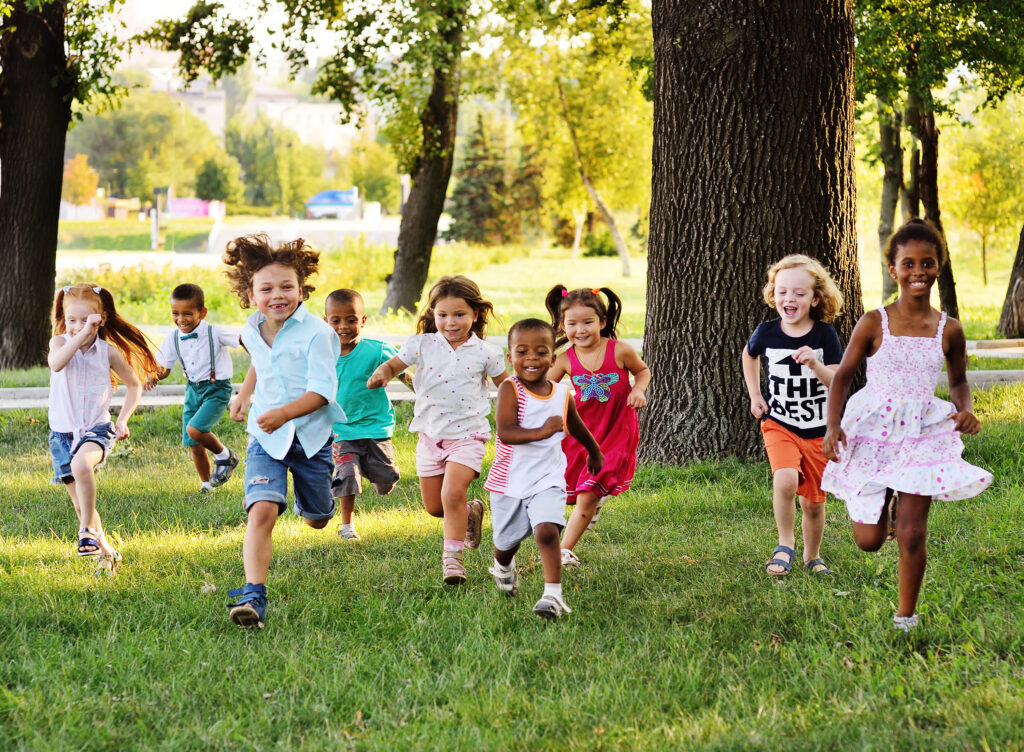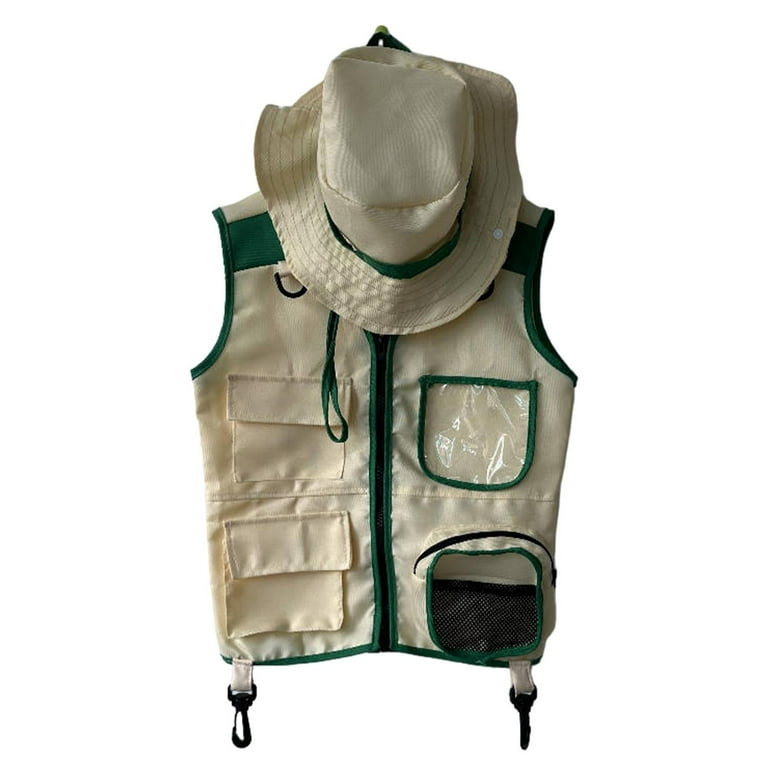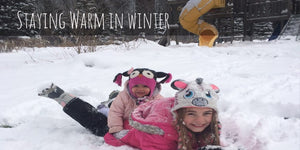Dressing kids for outdoor activities can be a challenge. You want them to be comfortable and safe.
As parents, we know that kids love to play outside. Whether it’s a sunny day at the park or a chilly hike through the woods, dressing them right is crucial. The key is to balance comfort, protection, and practicality. From layering for warmth to choosing breathable fabrics, there are many factors to consider.
This guide will help you navigate the best clothing options for your little adventurers. Keep reading to ensure your kids are always ready for their next outdoor adventure.
Choosing The Right Fabrics
Choosing the right fabrics for kids’ outdoor activities is crucial. It ensures they stay comfortable, safe, and happy. The right materials can make all the difference. Let’s explore the best options.
Breathable Materials
Breathable fabrics help regulate body temperature. They allow air to circulate, keeping the skin cool. This is important during physical activities.
Some examples of breathable materials are:
- Cotton: Soft and lightweight, perfect for warm weather.
- Linen: Natural and cool, ideal for summer days.
- Bamboo: Eco-friendly and breathable, great for sensitive skin.
Moisture-wicking Fabrics
Moisture-wicking fabrics pull sweat away from the skin. This keeps kids dry and comfortable. These materials are perfect for active play.
Here are some popular moisture-wicking fabrics:
- Polyester: Durable and quick-drying, suitable for sportswear.
- Nylon: Lightweight and strong, excellent for outdoor adventures.
- Merino Wool: Natural and odor-resistant, great for cooler climates.
Use a combination of these fabrics to dress kids for outdoor fun. They will stay comfortable and enjoy their activities to the fullest.

Credit: thrive-pediatrics.com
Layering Techniques
Layering techniques are essential for dressing kids for outdoor activities. These techniques help keep children warm, dry, and comfortable in various weather conditions. Proper layering ensures that kids can enjoy their time outside without feeling too hot or too cold. By understanding how to use base layers, insulating layers, and outer layers, parents can effectively prepare their kids for any adventure.
Base Layers
Base layers are the first line of defense against the cold. These layers sit closest to the skin and help manage moisture. Choose materials like wool or synthetic fabrics. They wick sweat away from the body, keeping kids dry. Avoid cotton. It holds moisture and can make kids feel cold.
Insulating Layers
Insulating layers trap heat and keep kids warm. Fleece, down, or synthetic jackets work well for this purpose. These materials create air pockets that hold body heat. Insulating layers should fit comfortably over the base layer. They should not be too tight or too loose. This ensures maximum warmth and mobility.
Outer Layers
Outer layers protect kids from wind, rain, and snow. Waterproof or water-resistant jackets and pants are ideal. Look for breathable materials to prevent overheating. Outer layers should be durable and provide good coverage. Hoods, cuffs, and zippers help seal out the elements. These features keep kids dry and comfortable during outdoor activities.
Weather-appropriate Clothing
Ensuring kids wear weather-appropriate clothing for outdoor activities is essential. It keeps them comfortable and safe. The right gear depends on the season and weather conditions. Let’s explore the best clothing options for different weather scenarios.
Cold Weather Gear
Dressing kids for cold weather requires extra layers. Start with a moisture-wicking base layer. This keeps sweat away from their skin. Add an insulating layer like a fleece jacket. It traps body heat. Top it with a waterproof and windproof outer layer. This protects against rain and snow.
Don’t forget accessories. Warm hats, gloves, and scarves are crucial. They protect against frostbite. Waterproof boots are a must. They keep feet dry and warm. Thick socks add extra warmth. Make sure everything fits well. Tight clothing restricts movement. Loose clothing lets cold air in.
Warm Weather Outfits
In warm weather, lightweight and breathable clothing works best. Choose fabrics like cotton or linen. They allow air to circulate. This keeps kids cool. T-shirts and shorts are great options. They provide comfort and freedom of movement.
Sun protection is important. Hats with wide brims shield the face. Sunglasses protect the eyes. Lightweight long-sleeve shirts and pants provide extra sun protection. Don’t forget sunscreen. Apply it generously to exposed skin. Proper footwear is also key. Choose breathable shoes or sandals. They keep feet cool and comfortable.
Footwear Essentials
Proper footwear is key for kids during outdoor activities. Ensuring their feet are protected and comfortable can make all the difference. Let’s delve into the essentials: boots, shoes, socks, and liners.
Boots And Shoes
Choosing the right boots and shoes is crucial. For hiking, waterproof boots offer protection and support. They keep feet dry and sturdy on rough trails. For casual outings, lightweight sneakers can be more comfortable. They allow for easy movement and breathability.
Consider the activity and terrain. Sturdy boots for rough paths. Sneakers for smoother surfaces. Always opt for shoes with good grip and cushioning. This prevents slips and ensures comfort.
Socks And Liners
Socks are just as important as the shoes. Wool socks keep feet warm and dry. They wick away moisture, preventing blisters. In warmer weather, choose cotton socks. They are breathable and keep feet cool.
Liners add an extra layer of protection. They reduce friction, helping to prevent blisters. They also provide extra warmth in colder conditions. Always make sure socks and liners fit well. Avoid bunching and tightness to ensure comfort.
Head And Hand Protection
Ensuring proper head and hand protection for kids during outdoor activities is essential. This not only keeps them warm but also shields them from sun and cold-related issues. Below, we explore the importance of hats and caps, and gloves and mittens for your children.
Hats And Caps
Hats and caps play a crucial role in protecting kids’ heads. They keep the head warm in cold weather and provide shade in the sun.
- Sun Hats: Great for summer. They protect from harmful UV rays.
- Beanies: Perfect for winter. They keep the head warm and cozy.
- Baseball Caps: Ideal for casual outings. They offer moderate sun protection.
Invest in hats with adjustable straps. This ensures a snug fit as your child grows.
Gloves And Mittens
Gloves and mittens are essential for protecting kids’ hands. They keep hands warm and prevent frostbite in cold weather.
| Type | Benefits |
|---|---|
| Gloves | Provide flexibility for finger movement. Best for active play. |
| Mittens | Keep fingers together. Offer better warmth in freezing conditions. |
Choose waterproof options for snow or rain. This keeps hands dry and comfortable.
Ensure they fit well. Too tight, and they restrict movement. Too loose, and they fall off easily.
Sun Protection
Ensuring your kids are well-protected from the sun is crucial during outdoor activities. Without proper sun protection, children are at risk of sunburn and long-term skin damage. Here are some essential tips to keep your children safe under the sun.
Sunscreen
Applying sunscreen is the first step in protecting your child’s skin. Choose a broad-spectrum sunscreen with an SPF of at least 30. Apply it generously on all exposed skin. Don’t forget areas like the ears, neck, and tops of feet.
- Apply 15 minutes before going outside.
- Reapply every two hours.
- Use water-resistant sunscreen for swimming or sweating.
Uv-protective Clothing
Another effective way to protect your child from the sun is through UV-protective clothing. These clothes are designed to block out harmful UV rays. They are often made from tightly woven fabric and have a UPF (Ultraviolet Protection Factor) rating.
| Clothing Type | UPF Rating |
|---|---|
| Long-sleeve shirts | 50+ |
| Wide-brimmed hats | 50+ |
| Sunglasses | 100% UV protection |
Encourage your kids to wear hats and sunglasses. These items provide extra protection for their face and eyes. Always opt for clothing that covers more skin, like long-sleeve shirts and long pants.
Rain Gear
Dressing kids for outdoor activities can be challenging, especially on rainy days. Rain gear is essential to keep them dry and comfortable. The right rain gear will ensure your child enjoys their outdoor adventures, regardless of the weather.
Waterproof Jackets
Waterproof jackets are a must-have for rainy weather. Look for jackets made from breathable materials. This will keep your child from overheating while staying dry. Many jackets come with hoods, which add extra protection. Choose one with adjustable cuffs to keep water out of the sleeves.
- Breathable materials
- Hooded designs
- Adjustable cuffs
Another important feature is reflective strips. They ensure your child is visible in low light conditions. Pockets are also handy for storing small items or keeping hands warm.
- Reflective strips
- Multiple pockets
Rain Pants
Rain pants are just as important as jackets. They protect your child’s legs from getting wet and muddy. Choose pants with elastic waistbands for a snug fit. Adjustable leg openings are also useful. They help to keep water and mud out of shoes.
- Elastic waistbands
- Adjustable leg openings
Many rain pants are designed to be worn over regular clothes. This makes them easy to put on and take off. Look for lightweight and breathable materials. This ensures your child stays comfortable even during active play.
- Lightweight materials
- Breathable design
Investing in quality rain gear will make outdoor activities more enjoyable for your kids. They can splash in puddles, run through the rain, and stay dry and happy.
Safety Accessories
Ensuring your kids are safe during outdoor activities is crucial. Safety accessories play a big part in this. These items help protect your children from potential dangers. Let’s explore some essential safety accessories.
Reflective Gear
Reflective gear is vital, especially in low light conditions. It makes your child visible to others. This reduces the risk of accidents.
Common reflective gear includes:
- Reflective vests
- Reflective armbands
- Reflective stickers for clothes and bags
Ensure the gear is comfortable. Kids should enjoy wearing them. Bright colors with reflective strips work best.
Protective Helmets
Protective helmets are a must for many activities. They protect your child’s head from injuries. Always choose a helmet that fits well.
Here are some tips for choosing the right helmet:
- Check for proper certification labels
- Ensure a snug fit without being too tight
- Adjust the straps for a secure fit
Different activities need different helmets. For biking, use a bike helmet. For skateboarding, a skate helmet is better. Always follow the manufacturer’s instructions for the best protection.
Comfort And Fit
Comfort and fit are crucial for kids during outdoor activities. Improper clothing can ruin their experience. Ensure they wear appropriate clothing. This will keep them happy and active.
Proper Sizing
Choose the right size for your child. Clothes should not be too tight. Tight clothes restrict movement. Loose clothes can cause discomfort. Measure your child before buying new clothes. Check size charts provided by brands. Ensure a good fit for maximum comfort.
Adjustable Features
Look for clothes with adjustable features. These include elastic waistbands and adjustable straps. They allow flexibility as your child grows. Adjustable cuffs and hems provide a better fit. They also help in keeping out wind and cold. Velcro closures are easy for kids to manage. They also ensure a snug fit.
Eco-friendly Options
Choosing eco-friendly options for dressing kids for outdoor activities benefits both the environment and your child’s health. Opting for sustainable and second-hand clothing reduces waste and promotes responsible consumption. These choices ensure your little ones enjoy nature while protecting it.
Sustainable Materials
Sustainable materials are key in eco-friendly clothing. Organic cotton is a great choice. It uses less water and avoids harmful pesticides. Bamboo fabric is another excellent option. It grows quickly and needs fewer resources. Look for garments made from recycled materials. These help reduce landfill waste. Hemp is a durable, sustainable fabric too. It grows well without pesticides and enriches the soil. These materials are gentle on your child’s skin. They also last longer, saving you money in the long run.
Second-hand Clothing
Second-hand clothing is an eco-friendly choice. It gives clothes a second life and reduces waste. Thrift stores often have a great selection for kids. Online marketplaces are another good option. Look for gently used items that can endure outdoor play. Hand-me-downs from friends and family are also valuable. They often come with a sense of history and care. Swapping clothes with other parents can be fun and practical. It keeps your child’s wardrobe fresh without spending much.
Packing Essentials
Packing essentials play a crucial role in ensuring kids enjoy outdoor activities. Parents must be prepared for any situation. Proper packing ensures children stay comfortable and safe while exploring nature. Here are some must-have items for your packing list.
Extra Clothes
Bring extra clothes for your kids. Weather can be unpredictable, and kids often get dirty. A spare set of clothes helps keep them warm and dry. Pack layers like shirts, sweaters, and jackets. Layering allows you to adjust to temperature changes easily. Don’t forget socks and underwear. Wet feet can make kids uncomfortable. Having dry socks on hand is essential. Pack a hat and gloves for cold weather. Sun hats and lightweight clothes protect against the sun during hot days.
Emergency Kit
An emergency kit is essential for outdoor activities. First aid supplies like band-aids, antiseptic wipes, and gauze pads are crucial. Include items like tweezers and scissors for minor injuries. Pack sunscreen and insect repellent. Protecting your kids from sunburn and bug bites is vital. Carry a whistle and flashlight in case of emergencies. A whistle helps kids signal for help if needed. A flashlight ensures visibility when it gets dark. Don’t forget to pack any necessary medications. Keep them in a waterproof container to stay safe and dry.

Credit: www.walmart.com
Budget-friendly Tips
Ensuring kids are ready for outdoor activities can be challenging. Balancing quality and cost is key. Parents can find affordable solutions without compromising comfort and safety.
Seasonal Sales
Seasonal sales offer great opportunities to save money. Check stores during the end of each season. You can find winter gear in spring sales. Summer clothes often cost less in autumn. Sign up for store newsletters. Notifications about upcoming sales can help you plan.
Diy Solutions
Do-it-yourself projects can save money and be fun. Repurpose old clothes into new items. Turn old jeans into shorts. Create mittens from old sweaters. Look for easy sewing tutorials online. Involve your kids in the process. They might enjoy the craft and learn new skills.
Encouraging Independence
Encouraging independence in children is vital for their growth and confidence. Dressing for outdoor activities offers a great opportunity to teach self-reliance. By guiding kids to dress themselves, they learn essential skills. This also builds their self-esteem.
Teaching Self-dressing
Start by showing your child how to dress independently. Use simple steps and clear instructions. Begin with easy tasks, like putting on a hat or shoes. Gradually move to more complex clothing items.
Make self-dressing fun and engaging. Turn it into a game or a race. Use positive reinforcement and praise their efforts. This encourages them to keep trying and improving.
Provide clothes that are easy to put on and take off. Velcro shoes, elastic waistbands, and large buttons are helpful. These make the process less frustrating and more enjoyable.
Choosing Their Own Outfits
Let your child choose their own outfits. This builds their decision-making skills. Offer limited options to avoid overwhelming them. For example, lay out two pairs of pants and two shirts. Let them pick which ones to wear.
Teach them about weather-appropriate clothing. Explain why some clothes are better for certain conditions. Use a simple table like the one below:
| Weather | Clothing |
|---|---|
| Sunny | Light t-shirt, shorts, hat |
| Rainy | Raincoat, waterproof boots |
| Cold | Warm jacket, gloves, scarf |
Explain the importance of layers. Teach them to add or remove layers as needed. This keeps them comfortable in changing weather conditions.
Encouraging kids to dress for outdoor activities fosters independence. It also helps them understand the importance of appropriate clothing. Use these strategies to make the process enjoyable and educational.

Credit: www.womenfutureconference.com
Frequently Asked Questions
What Are The Best Fabrics For Kids’ Outdoor Clothes?
Choose fabrics like cotton, wool, and polyester. They keep kids warm, dry, and comfortable.
How Many Layers Should Kids Wear Outside?
Dress kids in three layers: base, middle, and outer. This keeps them warm and dry.
What Type Of Shoes Are Best For Outdoor Activities?
Waterproof and sturdy shoes or boots are best. They protect kids’ feet and keep them dry.
How Can I Protect My Child From The Sun?
Use sunscreen, hats, and sunglasses. Dress kids in lightweight, long-sleeve shirts to block UV rays.
Conclusion
Choosing the right clothes for kids’ outdoor activities is crucial. It ensures comfort and safety. Always consider the weather and activity type. Layering works well in fluctuating temperatures. Good footwear protects their feet. Accessories like hats and gloves are essential in extreme weather.
Dressing appropriately helps kids enjoy and stay active longer. Keep these tips in mind for happy, healthy outdoor adventures.







